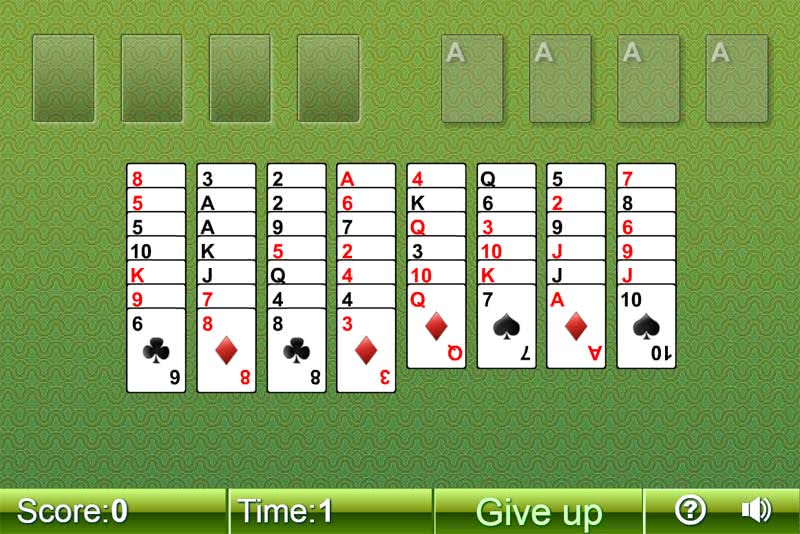Frequently Asked Questions About Solitaire Classic
Below are answers to some of the most common questions about Solitaire Classic, addressing everything from game mechanics to historical significance and cognitive benefits.
Is Solitaire Classic always winnable?

No, not every deal of Solitaire Classic (Klondike) is winnable. Research and computer simulations suggest that approximately 80-90% of games are theoretically winnable with perfect play. However, the actual success rate for human players is typically much lower, around 20-30%, depending on skill level and specific rule variations.
Several factors can make a game unwinnable:
- Unfortunate card sequences where key cards are trapped beneath cards of the same color
- Critical cards being buried too deep in the tableau
- Key cards positioned disadvantageously in the stock pile
The standard draw-three variant of Solitaire Classic is significantly harder than the draw-one version, with fewer winnable deals. The uncertainty of whether a particular game is winnable adds to the challenge and appeal of Solitaire Classic for many players.
Why is Klondike the most well-known variant?
Klondike became the most recognized variant of Solitaire Classic primarily due to its inclusion in Microsoft Windows beginning with Windows 3.0 in 1990. This digital implementation exposed millions of computer users worldwide to this specific variant, effectively making "Klondike" and "Solitaire" synonymous for many people.
Several other factors contributed to Klondike's dominance:
- Balanced Challenge: Klondike offers an ideal balance of skill and chance, making it accessible to beginners while still challenging for experienced players.
- Visual Appeal: The cascading tableau creates a visually pleasing layout that translates well to both physical cards and digital screens.
- Historical Momentum: The game gained popularity during the Klondike Gold Rush era (1896-1899), possibly contributing to its name and widespread adoption.
- Optimal Complexity: The rules are simple enough to learn quickly but complex enough to remain engaging over repeated plays.
While other variants like Spider, FreeCell, and Pyramid have their dedicated followers, Klondike's early digital adoption and balanced gameplay cemented its position as the definitive Solitaire Classic variant in popular culture.
Can Solitaire Classic help improve concentration?
Yes, playing Solitaire Classic can help improve concentration and provide several cognitive benefits. Research in cognitive psychology suggests that card games like Solitaire Classic engage multiple brain functions simultaneously:
- Sustained Attention: Solitaire Classic requires players to maintain focus for extended periods, strengthening concentration abilities.
- Working Memory: Keeping track of card positions and potential moves exercises working memory capacity.
- Planning and Strategy: Successful play requires thinking several moves ahead, enhancing planning skills.
- Pattern Recognition: Players must quickly identify card patterns and sequences, improving visual processing.
- Decision Making: Each move involves weighing multiple options and consequences, honing decision-making abilities.
Solitaire Classic also provides a meditative quality that can reduce stress and anxiety. The rhythmic nature of card sorting and the clear rules create a structured, predictable environment that can be calming for many players.
For older adults, regular card games like Solitaire Classic may help maintain cognitive function and potentially slow age-related cognitive decline by keeping neural pathways active and engaged.
How old is Solitaire Classic?
Solitaire Classic has a long and somewhat unclear history, with evidence suggesting it originated in the late 18th century. The earliest documented references to solitaire card games appear in German game anthologies from the 1780s and 1790s.
Key historical milestones include:
- Late 18th Century: First documented appearances in Northern Europe, particularly Germany and Scandinavia.
- Early 19th Century: The game gained popularity among French nobility, with Napoleon Bonaparte reportedly playing solitaire during his exile on St. Helena.
- 1870s: Lady Adelaide Cadogan published "Illustrated Games of Patience," one of the first English collections of solitaire games, helping standardize rules.
- 1890s: The name "Klondike" became associated with the standard variant, possibly due to popularity during the Klondike Gold Rush.
- 1990: Microsoft included Solitaire in Windows 3.0, dramatically increasing its popularity in the digital age.
Remarkably, the basic rules and structure of Klondike Solitaire have remained largely unchanged for over 200 years, demonstrating the enduring appeal of its fundamental gameplay.